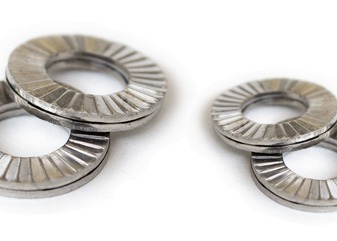 Added to quote
Added to quoteSearch the more than 56,000 items in the catalog.

Over time, classifications and nomenclatures for bolts have been defined to regulate their mechanical and physical characteristics, both at national and international levels. Specifically, the main standards for fasteners are ISO, DIN, and UNI....
Read more ...
Washers are a mechanical item generally placed between the nut of a bolt and the object to be locked. Their main task is to distribute the clamping load over a larger surface than that covered by a bolt or screw (a very advantageous functionality wit...
Read more ...
Anchor Bolts are elements used in various sectors, from construction to telecommunications, for the construction and securing of load-bearing structures. They can be made with different head and shank shapes, with various types of materials and surfa...
Read more ...
Assembling objects, tools, or furniture is an activity that requires secure tightening, thus tightening the used elements to the right point. This activity cannot be left to chance but it is appropriate to know well the torque values of bolts, nuts, ...
Read more ...
Self-tapping screws are used to quickly, simply, and stably connect thin plastic sheets, metals, light alloys, wood, and other ductile materials. The threading of these screws is created following a particular geometry, to ensure a decent resistance ...
Read more ...
Washers are a mechanical component that is generally placed between the nut of a bolt or under the head of a screw and the component to be locked. For many, this particular part is relegated to the task of increasing the locking of the bolted union t...
Read more ...
In bolted connections subjected to continuous stresses, there is often a serious risk that the nut may loosen from the screw. For this reason, self-locking (or self-braking) nuts have been developed and designed....
Read more ...
Disc Springs, a mechanical component within the washer family, are easily recognized by their distinctive conical shape, which gives the part elasticity and the capacity to absorb high loads even in a small housing space....
Read more ...
Anchors are supports designed to allow greater adherence of the screw inside the wall. It is, therefore, a wall fixing system that adapts well to every need thanks to the different types of products available on the market....
Read more ...
The term threading refers to the type of mechanical construction aimed at creating a helical coupling between two elements....
Read more ...
A thread gauge is a measuring tool, consisting of a series of stamped metal blades that are used to determine the pitch of a thread. Due to the presence of these blades, it is sometimes also called a leaf gauge....
Read more ...
Tamper-proof screws, also known as security or anti-theft screws, are recognized by the special configuration of their head or type of drive. One of the advantages of this product is the vast array of combinations and options between the type of head...
Read more ...